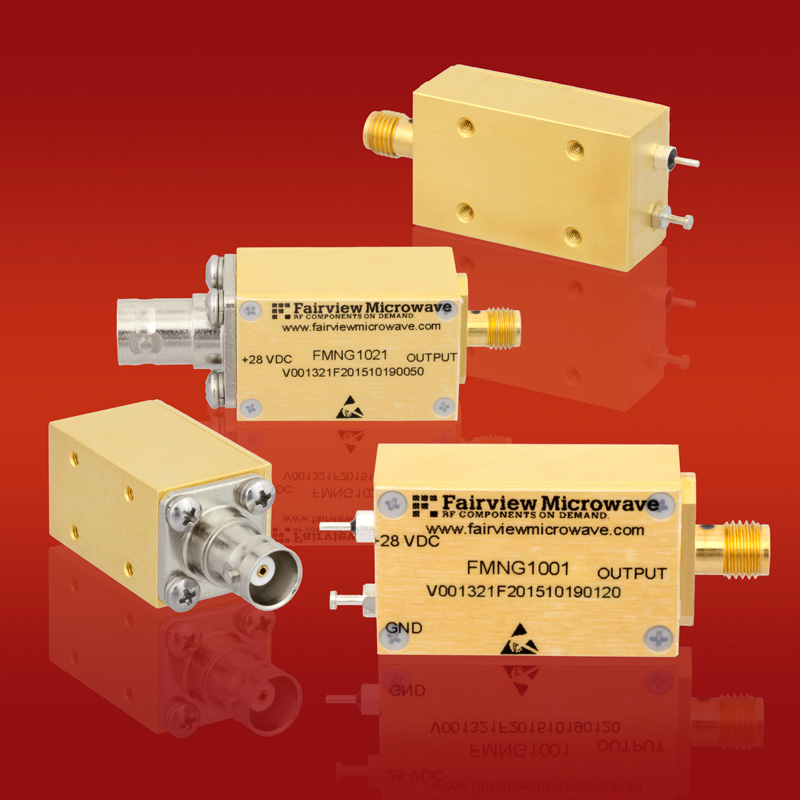Fairview Microwave Inc. has introduced a line of calibrated noise sources most commonly used as a precision reference source to measure system level noise figure. Specific applications may involve increasing the dynamic range of analog to digital converters by dithering and reducing correlated noise, system and component wireless testing, signal simulation, evaluating analog and DOCSYS CATV systems, and simulation of RF jamming systems for missile guidance. They can also be used as a source for bit error rate (BER) testing for SATCOM and digital radio systems and as a source for Gaussian jitter for testing of optoelectronic devices.
Fairview’s 10 new calibrated noise source models cover frequency bands from 10 KHz to 18 GHz. Their performance specifications include output ENR levels ranging from 15 dB to 30 dB and typical VSWR levels as low as 1.25:1. Depending on the model, calibrated frequency points are at 10 MHz, 100 MHz, 1000 MHz, 2000 MHz and 1 GHz steps. The temperature coefficient of these noise sources is < 0.01 dB/°C and noise output variation is < 0.1 dB/%V.
Designs incorporate 50 Ohm hybrid circuit board assemblies that use packaged noise diodes and other discrete components which are tuned for optimum performance. Assemblies are enclosed in rugged metal packages that use an SMA female output connector and, depending on the model, the DC connector is either solder pin or BNC female. All models in this product line are designed to meet MIL-STD-202F environmental test conditions for humidity, shock and vibration, and all models have an EAR99 export classification.





